Diving Headfirst into Skeleton
With the start of IBSF Skeleton World Championships this weekend, I thought now would be an appropriate time to tell you about my little venture into the sport of skeleton. Enjoy!
Growing up I was solely focused on one thing, to make the NFL. That was it. That was the goal, and I dedicated ten years of every waking moment working towards it. Like most aspiring to make "the league" the dream eventually dies. For me it was at the 2015 NFL Specialist Combine, when after a decent performance my phone didn't ring. However, I was not ready to give up the sport I grew up playing and somewhat loving. I decided to focus on trying out for the Canadian Football League (CFL) and teams in Europe. With some success, this effort ultimately led to an opportunity to represent the United States at the 2017 World Games.
(A field goal attempt vs. Poland at the 2017 World Games - photo credit Dawid Szulc)
After I returned home from Poland, the emails from American Football coaches began to dry up, I guess no one wanted a bronze medalist punter. I saw the writing on the wall, "this American Football ride was over", but at age twenty-seven I was not ready to stop playing sports. One of the things that my experience at the World Games gave me was a newfound interest in multi-sport games. Something else I learned in Wroclaw was that there was a whole world of other sports out there! I fired up the computer and began to do some research, "what sports could an athlete start later in life?" After a few minutes of research, I stumbled across a website promoting a program called "The Next Olympic Hopeful". This program aimed at finding athletic talent that could be translated into the sports of Weightlifting, Rowing, Track Cycling, and Bobsled. I have perhaps the worst lifting body in the world, so I did not even read about Weightlifting, and I have horrible cardio therefore Rowing and Track Cycling were also out. Now, I've seen Cool Runnings, so I figured that was a good start. I started reading about other American Football athletes who made the seamless transition from American Football to Bobsledding. "Bingo, this was it!" I signed up for the USABS combine in Lake Placid, NY that summer and continued my training.
(Once you enter the town of Lake Placid, they won't let you forget they hosted not one by TWO Olympic Winter Games!)
Entering the tiny mountain town of Lake Placid, NY is a surreal feeling, especially if you are a multi-sport games nerd like myself. You cannot escape the five rings that are plastered all over the town. When I arrived at the track for testing, I quickly realized that being a bobsledder would not be in my future. The USABS was not looking for drivers, most bobsled drivers are locals who have grown up piloting a sled. They were looking for push athletes, and the ideal push athlete is built like an American Football linebacker with the speed of a 100m sprinter. I do not come close in either category, so I moved over to the skeleton part of the track, totally unaware of what I was about to get into. The USABS combine test is very basic. Three tests, a 60m sprint, a standing broad jump, and a shot toss. After, you can try pushing a sled at their push track located at the Olympic Training Center. My training as a kicker and punter really helped me with these tests and I finished near the top of my group. At the end of the day, I was pulled aside by then USABS development coach Don Hass, who invited me to a "Skeleton School" later that winter.
(Did I ask a fellow athlete to take a picture of me pushing a push track sled? Obviously. Did I post it on Instagram? Of course!)
I came home from Lake Placid and continued life like normal, teaching high school, coaching, and tending bar, almost forgetting about skeleton. It was not until February that I received an email from Don inviting me to come back out to Lake Placid for a weeklong skeleton school. I then did what anyone with a work commitment would do - I drove to a Patient First and got a doctor’s note saying that I had the flu, thus a week off from school. With my school thinking I was sick, I packed my car and headed back up to Lake Placid.
The aura that Lake Placid had in August was not there when I arrived in a snowstorm. Lake Placid winters are cold, snowy, cold, cold, snowy, and COLD. There were mornings when I woke up and the temperature was -12 F! The veteran sliders just shrugged off the shrill chill and said, "makes for fast ice." When I arrived most of the national team members were over in Europe competing on the World Cup tour. The members that did not make the World Cup or were competing on lower-level tours were all in Lake Placid for training. Being around those other sliders was a great experience, some of these athletes had competed in Europe before and were very knowledgeable, helpful, and kind.
(This is the map of the Lake Placid track I was given my first day. Your only job is to study it. I still don't know what turn comes up next!)
While most of the athletes were at the top of the track, me and the other "newbies" had to start at the Junior Start which is around turn seven. Lake Placid has nineteen turns, so we started a little above the middle of the track. To be honest, before your first run there is not much instruction. You are taught which end of the sled is up, how to lie on the sled, and where to hold the handles. Nothing about steering, where to position your head, or how to not hit a wall. Once all the senior athletes completed their runs from the top, it was our turn. We would lay down on the sled, lift our feet up, and the coach would just shove us down the track. There are two reactions after your first run. A) That was awesome! Let's do that again! B) That hurt and was scary. To be honest, I had reaction B. On my first run I bounced my way down the track like a pinball. Every time I hit a wall it felt like sharp ice digging into your skin. However, unlike a few other newbies who also had reaction B, I did not call it a day, I went back up for my second run, and even did a third run that night, as the sliding experience began to grow on me.
(Some "cool" bruises after Day 1)
I arrived at the track the next morning to a much smaller "newbie" group. Seemed like a few who had reaction B decided that this was not for them. (By the way, there is nothing wrong with that!) We grabbed our sleds from the sled shed and hopped in the back of the sled truck. We stopped at the Junior Start, and I was on my way out of the truck when Don stopped me and another athlete. "Were going to the Doubles Start with you two", he said in the most casual tone. The other kid and I just looked at each other a little confused and a little scared. The "Doubles Start" is used by the Doubles Luge team and it is as close as you can get to the top without going off from the top. "It's the same as yesterday, but you go faster." Don said as he shoved me off from turn three. My first run from the Doubles Start was a blur... and painful. The biggest difference from the Junior Start to the Doubles Start was the speed and G Forces. I was going about twenty miles per hour faster than I had the day before. The G Forces would force your head down, making it impossible to see anything. However, just like the day before I went back up to the Doubles Start and slowly learned my way down the track, each time it got a little easier.
(A VERY bumpy run from the Doubles start)
I slowly began to enjoy my week and time at the track. Everyone in the sliding community from the athletes, to the track workers, to the truck drivers were kind and just good people. I also began to understand just how hard this sport really is. There were athletes who had been sliding for ten plus years who were still trying to break into the World Cup team. Even Don said that it takes on average eight years to become a good slider. By the end of the week, I made it to the top of track, although I was not allowed a running start just yet - but I've been told that takes around a year to master. I left Lake Placid with an invitation to come back the following winter.
(Those starts could use some work!)
On the drive home I thought about the reality of being a skeleton athlete. I did enjoy sliding, the community, and I was getting decent times compared to the other "newbies" there. However, I thought about the bigger picture of it all. Was I ready to give up my teaching career for this? Move to Lake Placid or Park City and leave my family and friends for this? Was I willing to embrace the struggles of learning a new sport, and understand that there was a good chance no matter how long or hard I tried, I might never make it? By the time I pulled up to my home in Baltimore I decided that those sacrifices were not in the cards for me. Nevertheless, it did give me a greater appreciation for all the sacrifices those Olympic hopefuls do make. It is one of the ugly sides of being an Olympic Hopeful that the public is unaware of. They do not see the athlete standing at the top of the track in -12 F weather, hoping to get this last run in before their shift at Delta Blue, which starts in thirty minutes. Oh, and they have not seen their significant other in six months.
Since my skeleton school experience, I have made trips to both Lake Placid and Park City to watch races and further explore my interest in the sport. I continue to follow both bobsled and skeleton extensively and have even stayed in touch with some of the athletes from my week there. (Sara Roderick, who was a first-year slider with me that week, will make her World Championship debut this weekend in Altenberg!) Participating in the skeleton school was one of the best athletic experiences I have had. Even if you are not an athlete, I know that both Lake Placid and Park City offer tourist rides, so if you are ever in those distant parts of the United States go take a slide down that icy hill - you will not regret it!
- Games and Rings and mrv86
-
 2
2

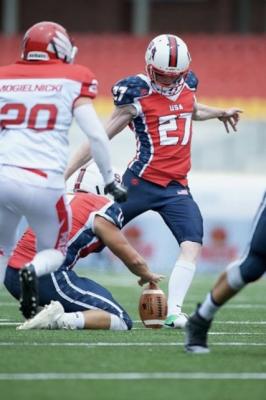
.thumb.jpg.289f0682ba02c8c6e206924ea1c7b34f.jpg)
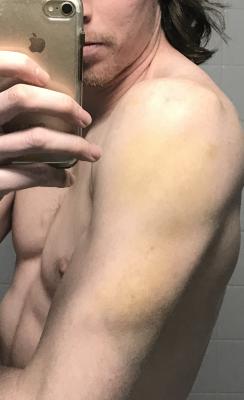
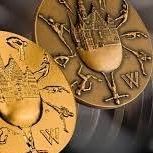

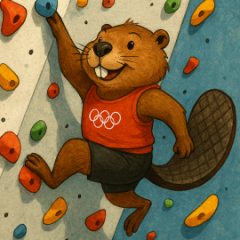
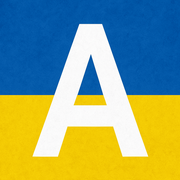
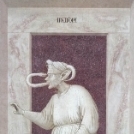
Recommended Comments
There are no comments to display.
Create an account or sign in to comment
You need to be a member in order to leave a comment
Create an account
Sign up for a new account in our community. It's easy!
Register a new accountSign in
Already have an account? Sign in here.
Sign In Now